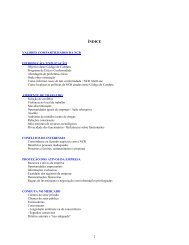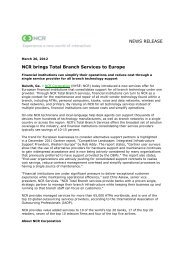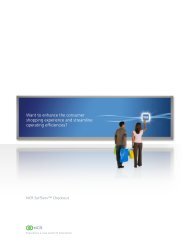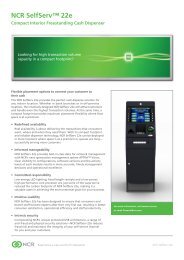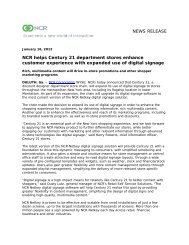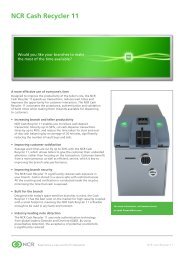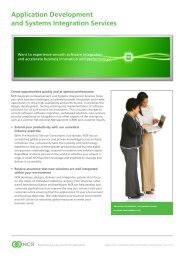Financial Inclusion White Paper - NCR
Financial Inclusion White Paper - NCR
Financial Inclusion White Paper - NCR
Create successful ePaper yourself
Turn your PDF publications into a flip-book with our unique Google optimized e-Paper software.
2. India’s Socio-Economic Landscape<br />
In the Index of <strong>Financial</strong> <strong>Inclusion</strong> (IFI) prepared by the Indian Council for<br />
Research on International Economic Relations (ICRIER), India has been placed<br />
50 th position in the list of 100 countries. The Index of <strong>Financial</strong> <strong>Inclusion</strong>, which<br />
measures the availability and usage of banking services, is based on indicators<br />
like the number of bank accounts per 1,000 adults, number of ATMs and bank<br />
branches per million people and the amount of bank credits and deposits.<br />
While economic growth in India has benefited a growing middle class, it has also<br />
created great disparities between urban and rural areas, prosperous and lagging<br />
states, and between skilled and low-skilled workers. Poverty is fuelled by a lack of<br />
access to social benefits, productive assets and financial resources. High levels of<br />
illiteracy, inadequate healthcare and extremely limited access to social services<br />
only aggravate the situation.<br />
<strong>Financial</strong> <strong>Inclusion</strong> has emerged as a tool for the socio-economic<br />
development of the society. The basket of financial services under<br />
<strong>Financial</strong> <strong>Inclusion</strong> will create an opportunity to capture the underserved<br />
market fulfilling corporate social responsibility thereby driving the<br />
economic growth of the country.<br />
About three-quarters of India’s population in poverty live in rural areas and are<br />
mainly dependent on agriculture. Indeed, agriculture employs a full 65 percent of<br />
India’s population, but contributes only 22 percent of GDP. Typically, small and<br />
marginal farmers, unable to access financial loans to grow their businesses, have<br />
been forced to get loans from local agents at extremely high interest rates of<br />
above 40 percent per annum.<br />
Agriculture employs large<br />
sections of the populace<br />
that is semi-skilled and<br />
semi-literate and at times<br />
unskilled and illiterate.<br />
Rural, semi-urban and<br />
urban slums have a similar<br />
nature of human resources<br />
available.<br />
10




